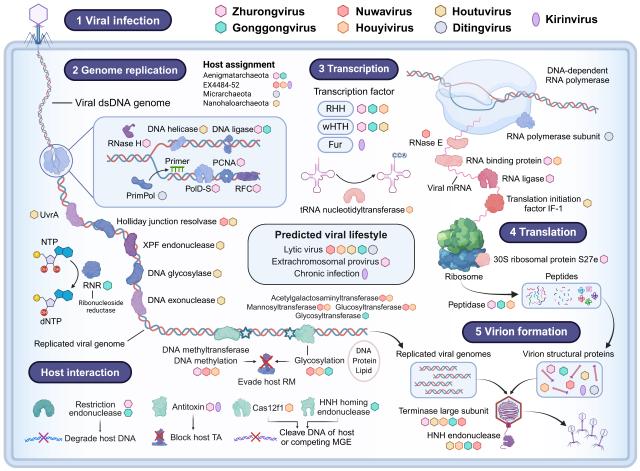

The archaeal superphylum DPANN (an acronym formed from the initials of the first five phyla discovered: Diapherotrites, Parvarchaeota, Aenigmarchaeota, Nanohaloarchaeota and Nanoarchaeota) is a group of ultrasmall symbionts able to survive in extreme ecosystems. The diversity and dynamics between DPANN archaea and their virome remain largely unknown. Here we use a metagenomic clustered regularly interspaced short palindromic repeats (CRISPR) screening approach to identify 97 globally distributed, non-redundant viruses and unclassified mobile genetic elements predicted to infect hosts across 8 DPANN phyla, including 7 viral groups not previously characterized. Genomic analysis suggests a diversity of viral morphologies including head-tailed, tailless icosahedral and spindle-shaped viruses with the potential to establish lytic, chronic or lysogenic infections. We also find evidence of a virally encoded Cas12f1 protein (probably originating from uncultured DPANN archaea) and a mini-CRISPR array, which could play a role in modulating host metabolism. Many metagenomes have virus-to-host ratios >10, indicating that DPANN viruses play an important role in controlling host populations. Overall, our study illuminates the underexplored diversity, functional repertoires and host interactions of the DPANN virome.
https://www.nature.com/articles/s41564-024-01839-y
